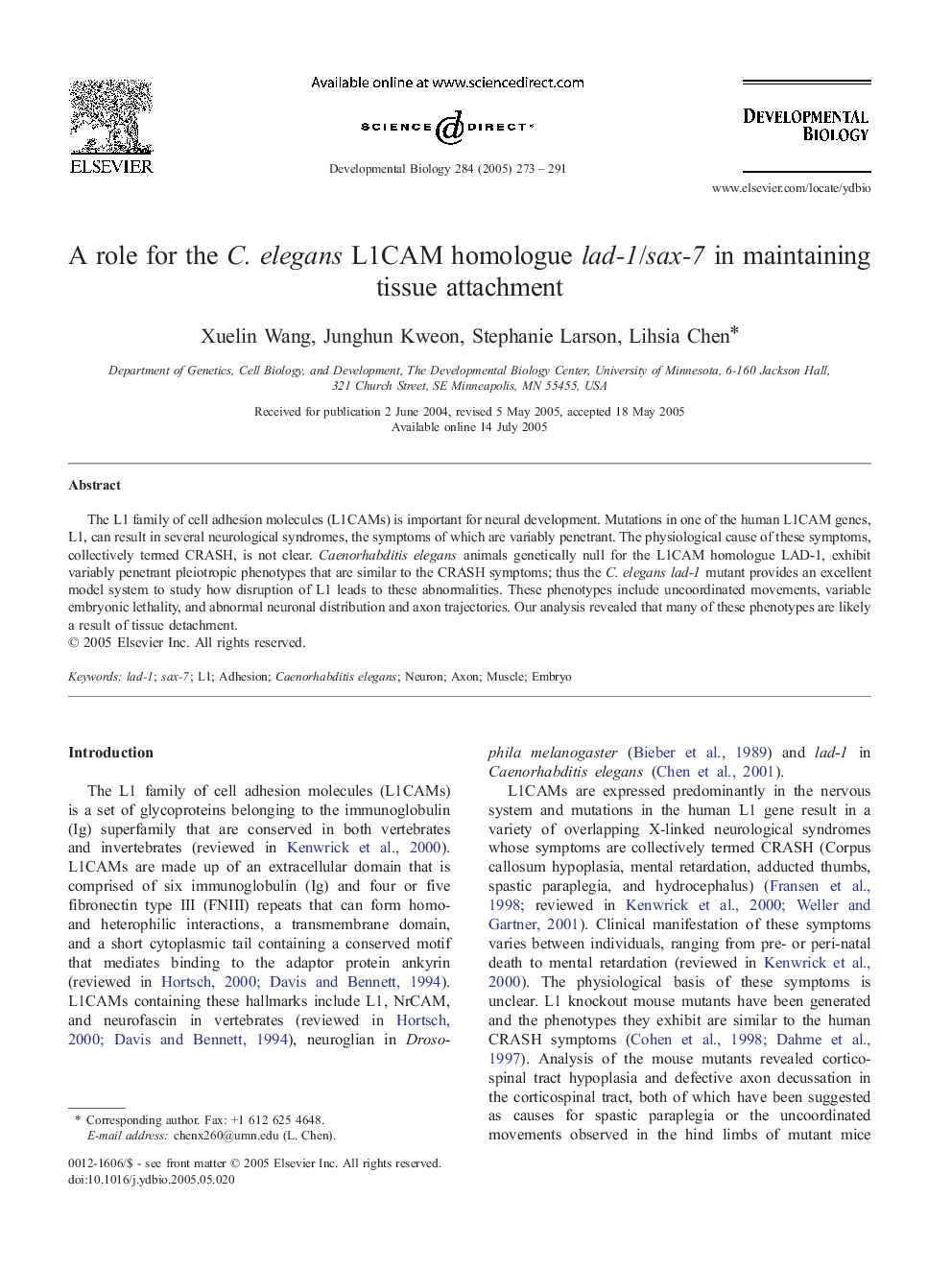| Article ID | Journal | Published Year | Pages | File Type |
|---|---|---|---|---|
| 10934166 | Developmental Biology | 2005 | 19 Pages |
Abstract
The L1 family of cell adhesion molecules (L1CAMs) is important for neural development. Mutations in one of the human L1CAM genes, L1, can result in several neurological syndromes, the symptoms of which are variably penetrant. The physiological cause of these symptoms, collectively termed CRASH, is not clear. Caenorhabditis elegans animals genetically null for the L1CAM homologue LAD-1, exhibit variably penetrant pleiotropic phenotypes that are similar to the CRASH symptoms; thus the C. elegans lad-1 mutant provides an excellent model system to study how disruption of L1 leads to these abnormalities. These phenotypes include uncoordinated movements, variable embryonic lethality, and abnormal neuronal distribution and axon trajectories. Our analysis revealed that many of these phenotypes are likely a result of tissue detachment.
Related Topics
Life Sciences
Biochemistry, Genetics and Molecular Biology
Cell Biology
Authors
Xuelin Wang, Junghun Kweon, Stephanie Larson, Lihsia Chen,
